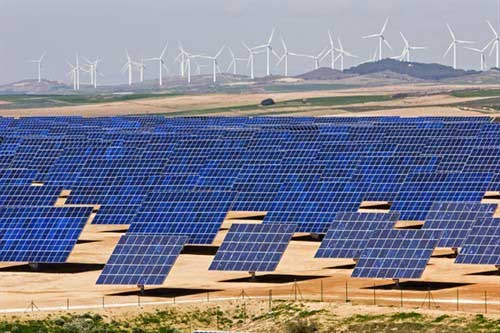Renewable energies are premised on the low-carbon economy, which is the fourth industrial revolution knocking on the world's doors to make it sustainable. It represents a transformation in technology, mentalities and values, processes and products, behaviours and lifestyles. If the current trend in emissions due to the energy produced by fossil fuels continues, there is a 50% chance that average global temperatures will increase over 4ºC by 2100 (Nicholas Stern, London School of Economics).
 In such a transformation, renewable energies are 'start of the cycle', with no exhaustion of resources or waste and, through biomimicry, the perfect scenario for energy sustainability. Their general systematic use will enable the demands of energy services to be met in a decentralised way, using local resources without polluting; in addition, consumption will be managed efficiently and saving energy incentivised. In order to move towards this, different types of incentives are being offered:
In such a transformation, renewable energies are 'start of the cycle', with no exhaustion of resources or waste and, through biomimicry, the perfect scenario for energy sustainability. Their general systematic use will enable the demands of energy services to be met in a decentralised way, using local resources without polluting; in addition, consumption will be managed efficiently and saving energy incentivised. In order to move towards this, different types of incentives are being offered:
Rates that prioritise renewable ecological production versus the cost outsourcing of the conventional model.
Quotas that oblige distribution companies to have a percentage of renewables in their supply mix.
Preferential access to the distribution grid.
Subsidies for research and tax exemptions for R&D&i.
This kind of support has boosted technological evolution in renewables such as wind power that is approaching ever further the thresholds of power and yield of non-renewables which, when all their environmental and social costs are taken into account, it may compete with on equal terms.
The GWEC (Global Wind Energy Council) predicted that the global market for wind should increase around 155% reaching 240GW of total installed capacity in 2012. This would represent an additional 146GW in 5 years with an investment of over 180 billion euro. This would generate around 3% of global electricity (in 2007 this stood at 1%).
In turn, renewables could be used as "raw materials" to produce substitute hydrogen for petrol and diesel in vehicle engines or for desalinating water. In short, the guarantees and opportunities offered by sources of renewable and non-polluting energy are on the rise.
Energy types:
Wind or aeolian, solar radiation or thermal solar, photovoltaic, thermo-electric, passive solar, rivers and canals or mini-hydraulic, waves and tides or tidal energy, biomass, electricity generation, biofuels, heat generation, organic wastes, biogas and the heat of the Earth or geothermal.ç
More information about renewable energy.